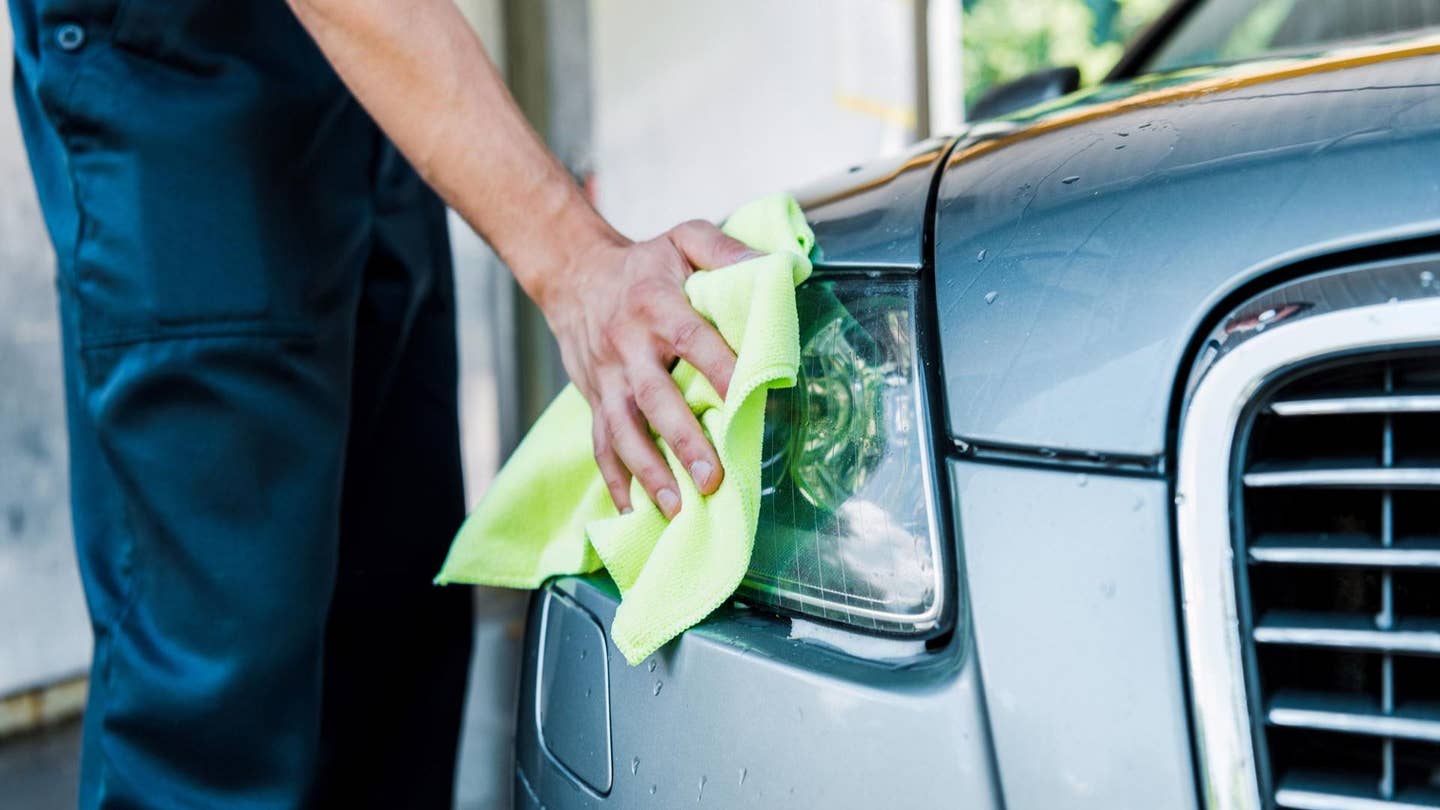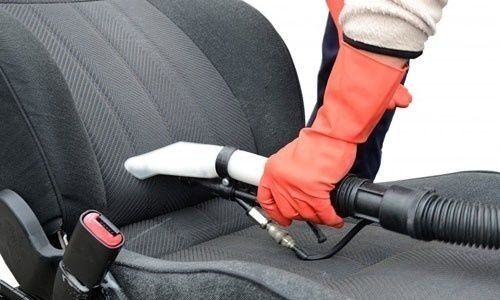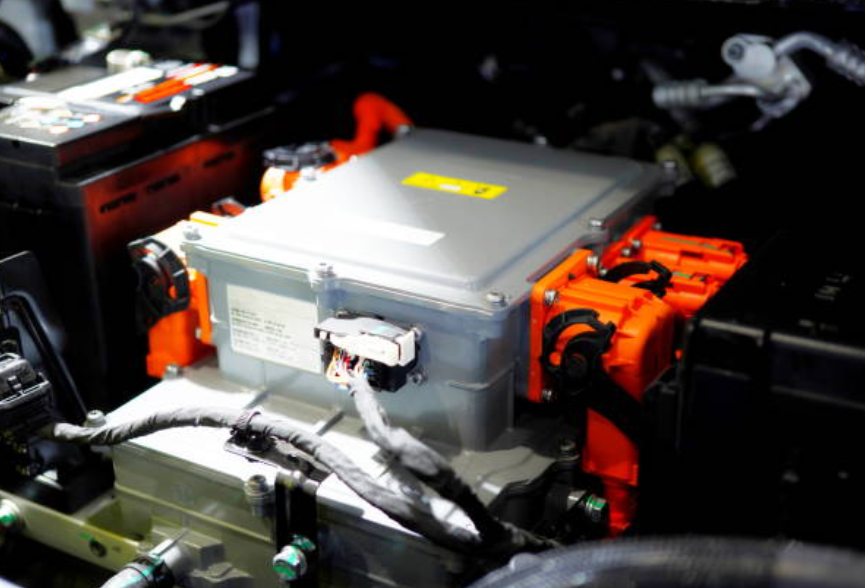How To Detail Your Car?
Car detailing is more than just a routine wash; it's a meticulous process that rejuvenates your vehicle inside and out, bringing it back to a showroom-like condition. Unlike automated car wash systems, professional auto detailing is a manual labor of love, where every inch of your vehicle is carefully cleaned and restored by hand.
From the interior to the engine bay and the exterior, every surface is given the attention it deserves to ensure a thorough and effective cleaning. In this comprehensive guide, we'll walk you through the essential tools and materials needed for car detailing, as well as provide step-by-step instructions for both interior and exterior detailing. This guide will also equip you with the knowledge and techniques to achieve professional-grade results.

What Is Car Detailing?
The art and craft of professionally washing and restoring a car to like-new condition is known as car detailing. A car wash is not nearly as precise or labor-intensive as car detailing services. An automated system is typically used in a car wash to clean the outside of the vehicle. Professional automotive detailing involves both exterior and interior detailing and is always completed by hand.

Here's a checklist of items you should have on hand:
Interior Detailing:
- Vacuum cleaner with various attachments to reach tight spaces.
- Soft-bristle brush or microfiber cloth for dusting.
- Upholstery cleaner suitable for your car's fabric.
- Leather cleaner and conditioner for leather surfaces.
- All-purpose cleaner or specific automotive interior cleaner.
- Microfiber cloths for wiping down surfaces.
- Interior protectant for adding shine and protection.
- Non-greasy interior polish for a final touch.
- Trash bags are for removing debris and personal items.
Engine Bay Detailing:
- Towels for wiping down engine components.
- Engine degreaser (optional).
- Detailing brushes for intricate areas.
Exterior Detailing:
- pH-neutral shampoo for pre-wash.
- Wheel cleaner for removing brake dust.
- Tire cleaner for revitalizing tire appearance.
- Microfiber wash mitt for hand washing.
- Two buckets for the two-bucket method.
- Clay bar and detailer spray for removing embedded contaminants.
- Polish and dual-action polisher for paint enhancement.
- Carnauba wax or synthetic sealant for paint protection.
- Glass cleaner for windows.
- Trim restorer for reviving trim shine.
- Microfiber towels are for buffing exterior surfaces.
- Tire dressing for glossy tire appearance.
Step 1: Preliminary Inspection
Before beginning the detailing process:
- Thoroughly examine your car.
- Identify areas with significant dirt, scratches, or tough stains.
- Evaluate the paint condition and take note of any imperfections that require attention.
Step 2: Rinsing and pre-washing
Initiate by rinsing your vehicle to loosen dirt and debris. Proceed with a gentle pre-wash using a pH-neutral shampoo to lift surface contaminants without causing harm to the paint.

Step 3: Cleaning Wheels and Tires
Address the wheels and tires separately. Utilize a specialized wheel cleaner to eliminate brake dust and grime. For tires, choose a tire cleaner to restore their deep black shine.
Step 4: Hand Washing
The handwashing phase is crucial. Employ a microfiber wash mitt and high-quality car shampoo to gently cleanse the exterior. Utilize the two-bucket method to prevent dirt transfer and swirl marks.
Step 5: Clay Bar Treatment
Clay barring makes a significant difference. It eliminates embedded contaminants, leaving the paint surface as smooth as glass. Glide a clay bar lubricated with detailer spray across the surface for a showroom-like finish.
Step 6: Polishing
Now, enhance the paintwork. Polish the paint to eliminate minor imperfections and restore gloss. Choose an appropriate polish and apply it with a dual-action polisher for optimal outcomes.
Step 7: Protection with Wax or Sealant
Protect your hard work with a protective coating. Apply a high-quality carnauba wax or synthetic sealant to provide depth and safeguard the paint from environmental factors.

Step 8: Detailing Glass and Trim
Pay attention to the glass and trim. Clean the windows with a dedicated glass cleaner and rejuvenate trim pieces with a trim restorer to renew their shine.
Step 9: Final Touches
Inspect the entire exterior for any overlooked areas or residues. Use a microfiber towel to gently buff the surfaces for a flawless appearance.
Step 10: Tire Dressing and Final Inspection
Conclude by applying tire dressing for a glossy finish. Step back and admire your work! Perform a final inspection under various lighting conditions to ensure perfection.
- Open the hood.
- Spray the engine bay with water using a hose or, if accessible, a power washer.
- Utilize a towel to clean the prominent parts, ensuring to eliminate any oil or accumulated grease.
- Proceed to clean the smaller components with another towel until the engine resembles its original state when you first purchased it.

Now that you have all the necessary tools, let’s delve into a systematic guide for detailing the interior of your car. Follow these steps meticulously to accomplish a comprehensive and professional clean:
1. Preparing Your Car’s Interior
Begin by eliminating any personal items, rubbish, and loose objects from your car. This initial step will simplify the cleaning process and guarantee that no areas are overlooked.
2. Vacuuming and Dusting
Commence by vacuuming the entire interior, encompassing the seats, carpets, floor mats, and tight corners. Utilize suitable attachments to access cramped spaces and edges. Pay special attention to spots where dirt and debris tend to gather, such as beneath the seats and between cushions.
After vacuuming, employ a gentle-bristle brush or microfiber cloth to eliminate dust from surfaces like the dashboard, center console, and door panels. This action will eliminate loose dirt and prime the surfaces for a deeper clean.

3. Cleaning the Upholstery and Fabric
Depending on the upholstery and fabric type in your car, utilize an appropriate cleaner to address stains and grime. Adhere to the instructions on the product label and utilize a microfiber cloth or soft brush to delicately scrub the affected areas. For stubborn stains, repetition of the process may be necessary. To simplify matters, you may explore our effective car cleaning hacks or, better yet, consider our professional cleaning services.
4. Treating leather surfaces
If your car features leather seats or interior components, it is imperative to clean and condition them correctly. Employ a leather cleaner to eliminate dirt and grime, then apply a leather conditioner to nurture and safeguard the surfaces. Ensure to adhere to the manufacturer’s recommendations regarding the specific products used.
5. Cleaning and conditioning the dashboard and panels
For the dashboard, door panels, and other hard surfaces, opt for an all-purpose cleaner or a product formulated specifically for automotive interiors. Apply the cleaner to a microfiber cloth and wipe down the surfaces, eliminating dust, fingerprints, and stains. For a sleek finish and additional protection, apply an interior protectant.
6. Polishing and protecting the interior surfaces
As a finishing touch, consider using a non-greasy interior polish to enhance shine and shield your car’s surfaces. Apply the polish with a clean microfiber cloth, adhering to the product instructions. Exercise caution to avoid excessive application that could result in a slippery surface.
Remember to take breaks and step outside your car periodically to evaluate your progress and ensure no areas have been overlooked. Adopting a systematic approach will facilitate achieving a thorough and meticulously detailed interior clean.
Throughout our journey, we've gathered a handful of expert tips to share with you.
- Opt for clothing with soft surfaces. For instance, jeans may contain metal components that could potentially scratch the car's surface.
- Always aim to park in shaded areas. If shade isn't immediately available, it's worth waiting for. Exposure to direct sunlight can lead to water and cleaning chemicals drying on the vehicle, resulting in unsightly streaks.
- Ensure not to neglect the wheel wells and the underside of the car. Although these areas may not be readily visible, it's essential not to skimp on cleaning efforts. They tend to accumulate more dirt and grime than any other part of the vehicle and demand extra attention to thoroughly remove all residue.
Beyond the core services mentioned earlier, professional car detailing establishments often extend their offerings to include specialized treatments such as:
- Paint refinement: This procedure focuses on eliminating imperfections from the top layer of a vehicle's paint, such as dullness or oxidation. Many detailers employ advanced rotary machine polishers to achieve superior paint refinement.
- Ceramic enhancement: ceramic enhancement involves the application of a liquid polymer onto the car's exterior to establish an additional protective barrier for the paint. It's commonly sought after as a high-end alternative to conventional wax treatments.
- PPF application: PPF, or paint protection film, provides a thin layer of polyurethane film designed to shield car paint from various external threats, including rock chips, minor scratches, UV exposure, mineral deposits, and acid rain. This service offers a comprehensive level of protection surpassing that of ceramic coatings.
How Much Does Car Detailing Cost?
Cleaning supplies account for a large portion of the detailing cost. Thankfully, those can be one-time, long-lasting purchases. If you do this yourself, the initial out-of-pocket expense will probably be approximately $100, but professional jobs can go into the thousands.
How Do Leather Seats with Perforations Get Cleaned?
We have also included a list of our top tips to lighten your wallet load and simplify your life, as you might not have access to the proper tools or know someone who can lend you a hand.
To remove the crud that gets stuck in the holes in your perforated leather, you might need to use a toothpick. The minuscule areas where dust and grime tend to gather are ideal for using Q-tips.
For car detailing, what is the worst weather?
You want to avoid windy days. It is possible for dust and debris to enter your home through the windows or damage the attractive façade. Avoid detailing on a busy day.
Car detailing blends artistry and science, requiring precision and patience to achieve a flawless finish. This guide offers step-by-step instructions and essential tools to transform your vehicle into a pristine masterpiece. Whether tackling the interior or exterior, each stage plays a crucial role in restoring your car's beauty and protecting its surfaces. So, take your time, pay attention to the details, and enjoy the rewarding experience of seeing your vehicle shine like never before.
Click on the following link to read another blog post: How Much Does It Cost To Wrap A Car?















